Measuring motion
We're starting a set of activities to investigate motion and the relation of gravitational energy and motion.
You'll use your iPad's video camera and (eventually) LabPro software to analyze motion in videos.
But first we'll look at:
- How you can measure things in pictures.
- How best to take videos to measure distances (and speeds).
Unit conversions-Measuring objects from images
I'd like to measure the height of this guy, Benjamin Meyer Reimer, who left campus last year:
Consider these photos, each of which contains a "yard stick"=36 inches along with Benjamin:
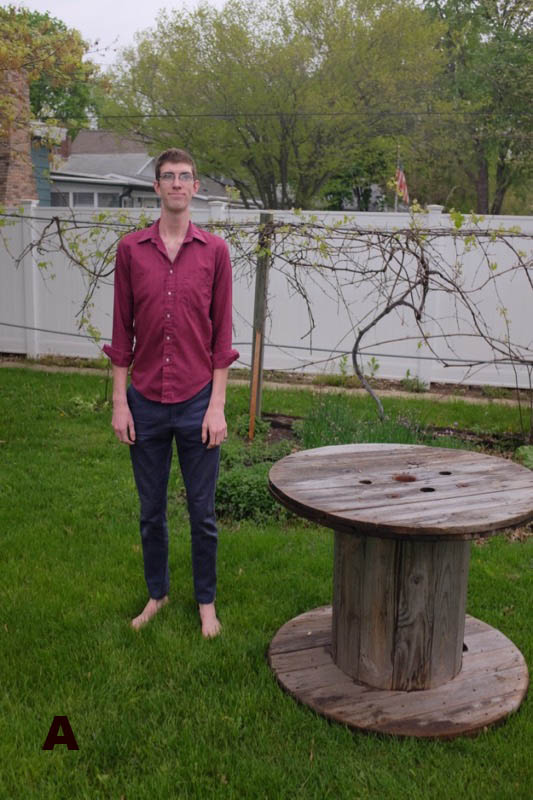
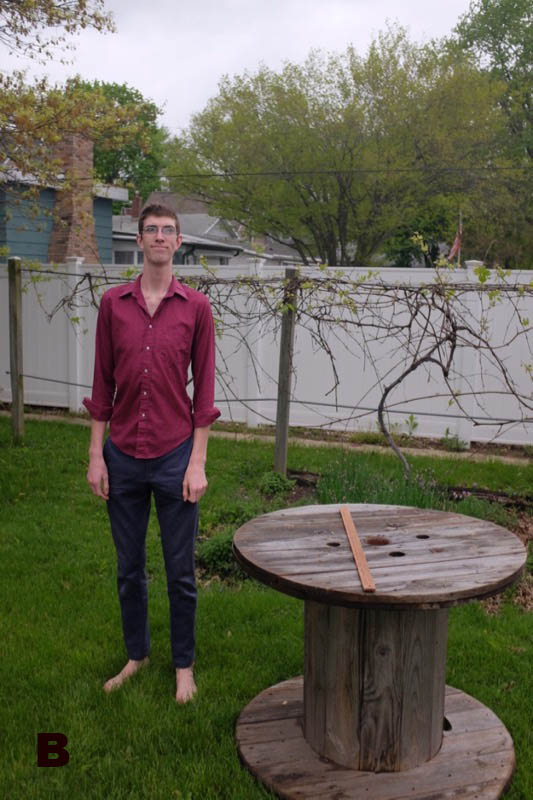
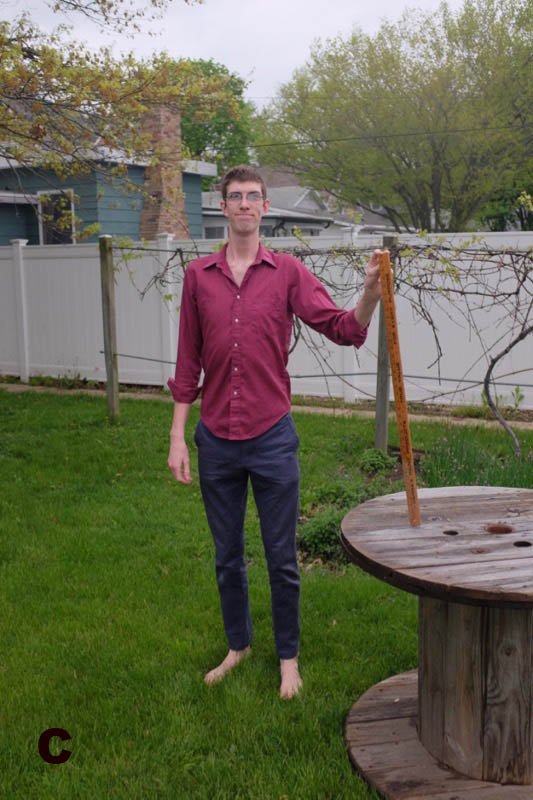
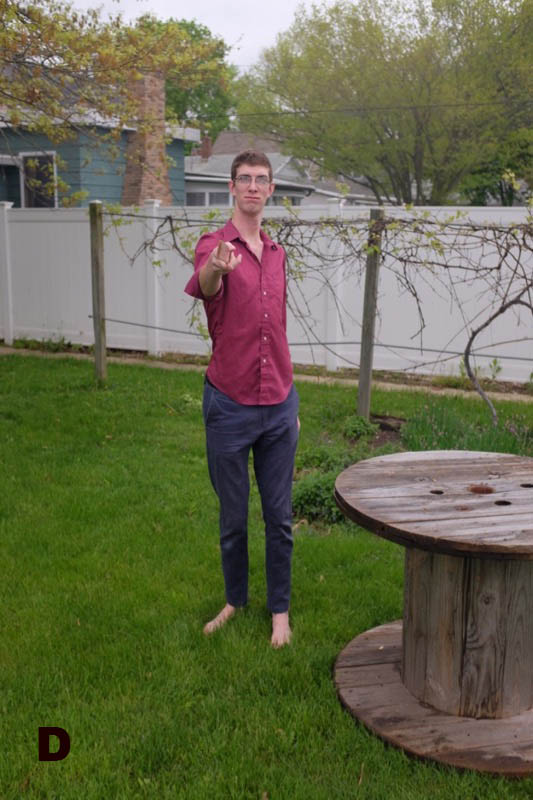
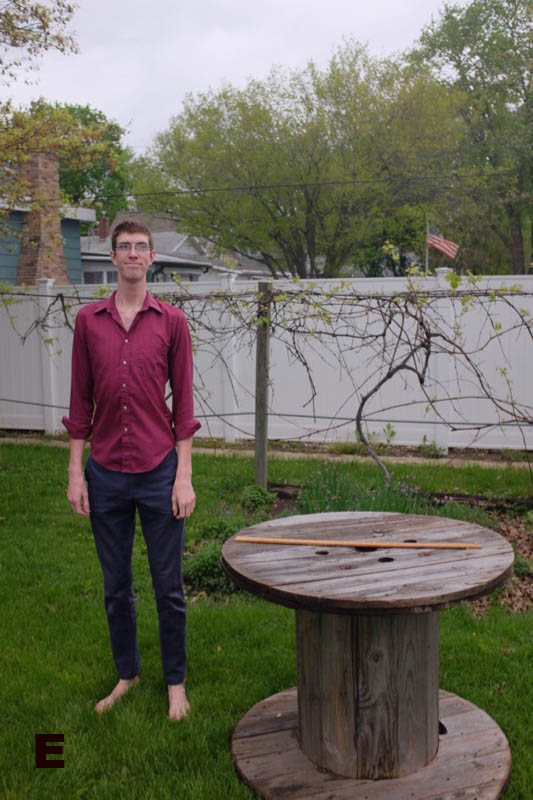
In each case, estimate the size of Benjamin by solving this equation to find "Ben's height in inches": $$\frac{\text{Ben's height in inches}}{\text{Ben's height in screen cm}} = \frac{\text{yardstick in inches = 36"}}{\text{yardstick in screen cm}}$$
Try to decide what the best way to position a reference object is to get a good height for Ben.
Summary
We looked at how to use a 'reference object' which has a length we know (a yard stick in the Benjamin picture) to measure the size of some other object (the subject) in the same picture/video.
- We eventually decided to summarize the *best* conditions for measuring something in a photograph like this.
- The reference object and the object to be measured need to be about the same distance to the camera.
- The reference object and the object to be measured need to be in the same plane: perpendicular to an imaginary line from the camera to the subject.
- All of the pictures gave results that were a bit off from his nurse-measured height of 6'11" (=81 inches). But some, C and E, gave heights closer to the height we expected than other photos.